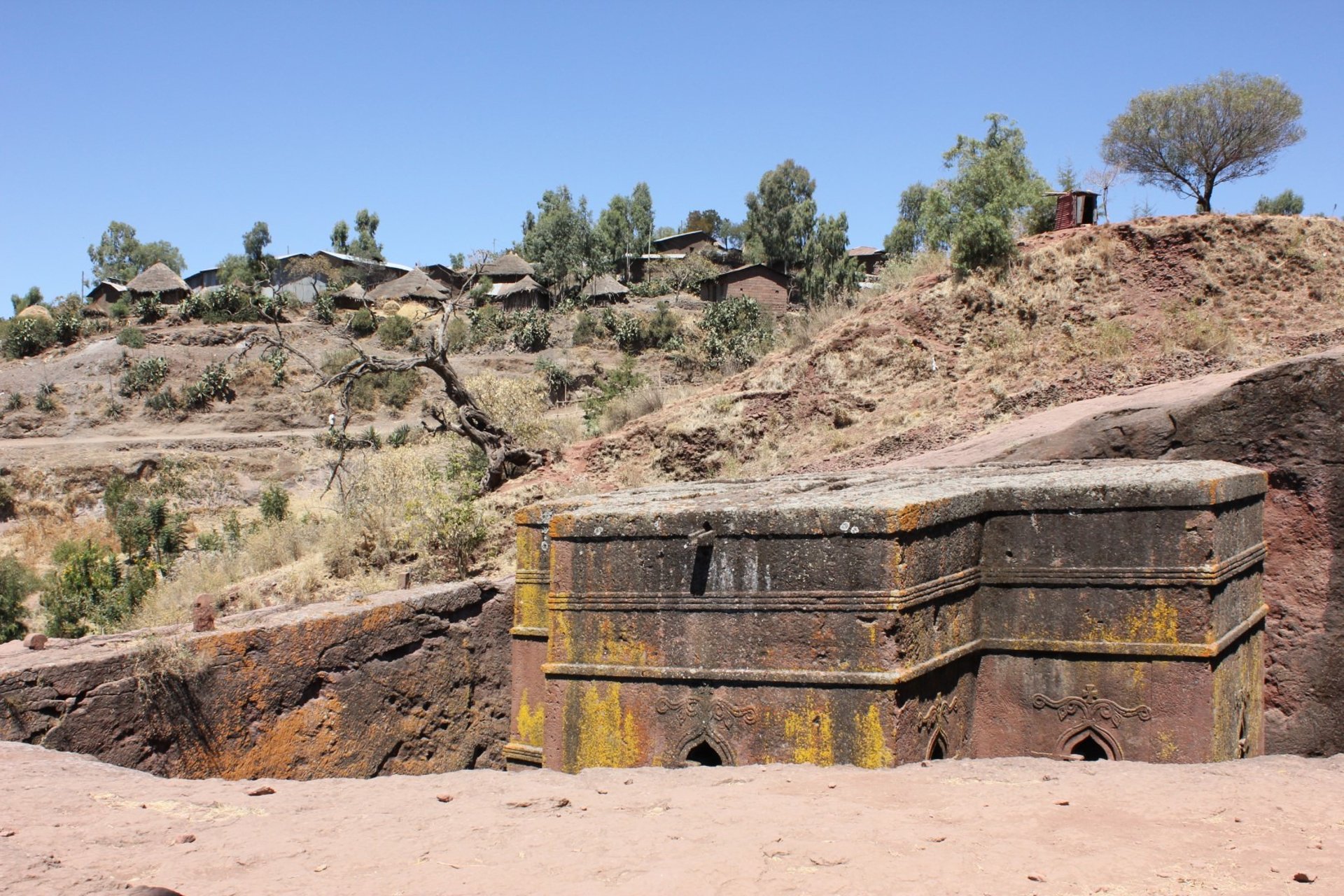
X Marks the Spot
2012, Lalibela
ETHIOPIAAFRICARELIGION
Before Lalibela was a place, it was a man. At the turn of the thirteenth century he was reigning over Ethiopia as emperor, and having seen Jerusalem in his youth he decided to build a holy city of his own. The town that remembers his name today still hosts his eleven huge churches, each of them I suppose technically a sculpture rather than a building. The rock-hewn churches I visited further north in Tigray province were made in the same way, but rely on their painted interiors and on the drama of the natural surroundings to awe the visitor. At Lalibela there's another dimension at play, with these churches rising to the level of serious architecture in anyone's book.
When you visit a cathedral in Europe your eyes are usually drawn upwards, and if they've made an effort with the ceiling you might find your forehead being pulled right back over your shoulders. At Lalibela you'll be craning your neck as well, but in a few different directions. Bete Giyorgis (the Church of Saint George) is probably the most photogenic of the ensemble. I first saw it from above, a stout cross shape sitting in a deep trench cut out of the rock, almost like a big X marking where the treasure is buried. Moving up to the edge of the hollow I could look down at the finely carved entrance, from where your eye naturally follows the carefully filigreed windows back to the surface. Maybe there's a message there, the holy house right under your own feet.
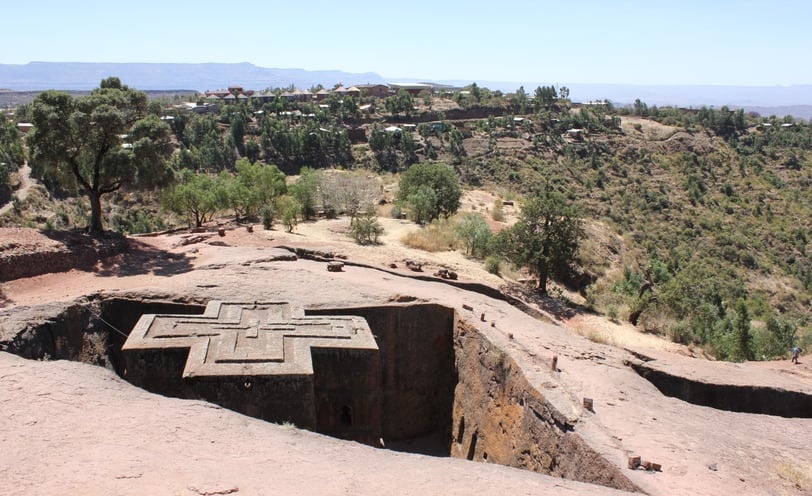

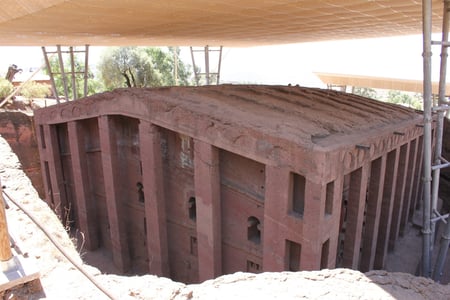
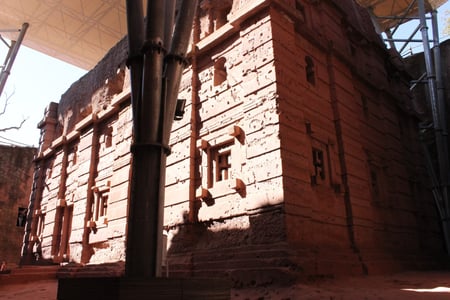


The place as a whole felt a bit like an archaeological dig site, with ancient things half-exposed from the ground here and there. Several of the other large churches had protective canopies installed over them. For me that detracted just a little from their visual impact, though I suppose that can't be helped. Nevertheless their scale and form together were really a sight to behold. You can see with your own eyes what a weight of rock must have been excavated and carried away, which is impressive enough on its own before you even begin to ponder the subtleties of layout and ornamentation. Some of the churches, like Bete Giyorgis and Bete Maryam, have enough in common with what you'd expect a Christian building to look like for anyone to immediately recognise them as such. Some of the others though, like Biete Amanuel and Biete Medhane Alem, have the strange, angular Axumite style, taking me back to the inscrutable stelae of that old city.
When I visited, Lalibela had the quiet atmosphere befitting a sanctuary, and I could walk around and take it all in at my leisure. I'm not sure it will always be like that. Already the jewel in Ethiopia's touristic crown, in the long term the place is probably destined for the mixed blessings of the big tour groups. It was the only place in the country where I was in any way hassled by hawkers, though it was mild enough in comparison with other places, Egypt for example. I think I actually had more trouble from the local flies, which were some of the most aggressive insects I've ever encountered. They landed on my face, went at my eyes; one actually flew into my mouth. In between gags and splutters I wondered how evolution came up with that one.
In the gold light of the evening I remember I was taking a rest at the side of the road, and a sprightly old man hailed me with an Italian word; "Salute, faranji!" - ahoy there, foreigner. At the time I thought it was like Ethiopia saying goodbye, I'd reached the end of my itinerary. As it turned out, there was a twist in store for me yet.
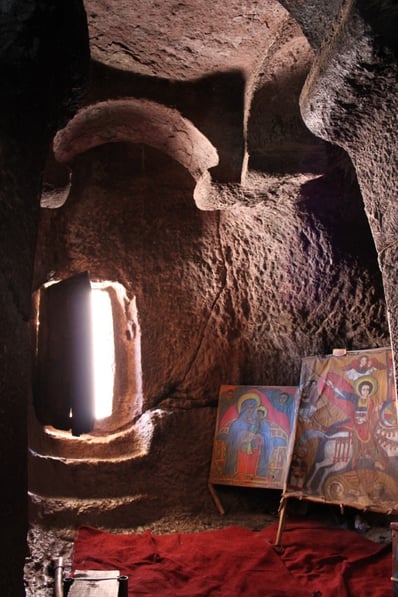
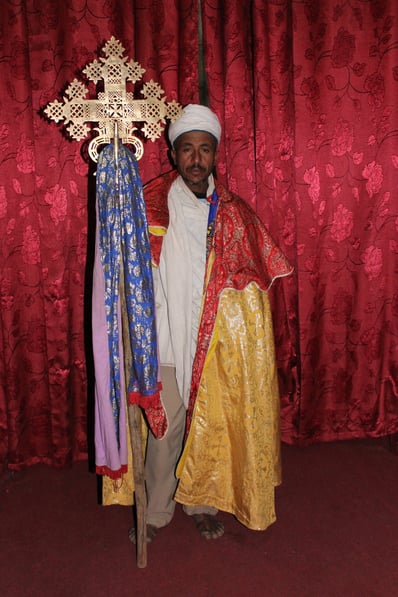

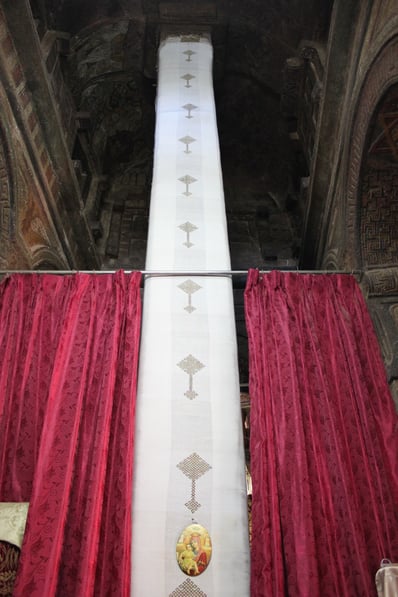




Neither do the insides disappoint. The cool stone is lovingly decorated, with abstract designs painted on the ceiling and scarlet drapes and carpets on the walls and floors. Icons and stone carvings project the mild expressions of Mary and her son, and the legions of saints who followed after him. Of note were certain pillars, covered in protective textiles. Supposedly underneath the cloth the stone bears inscriptions too powerful for ordinary eyes.
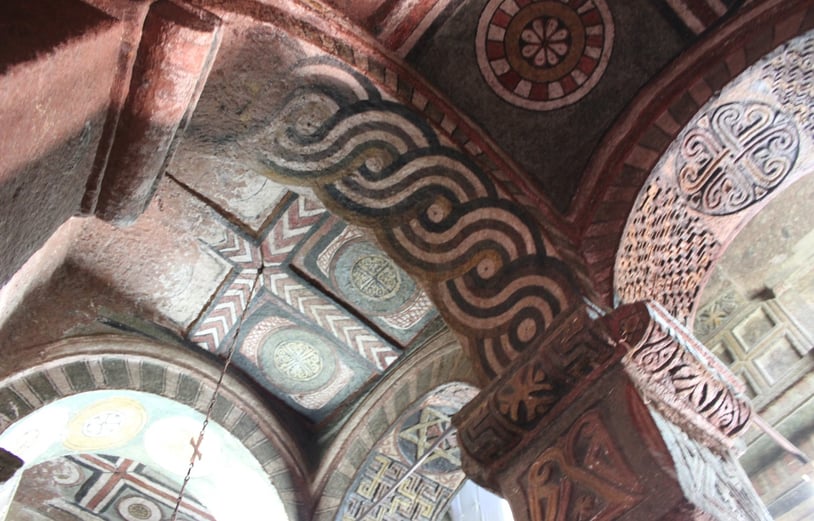

The Gist: Lalibela (2012)
TRAVEL WARNING: Civil war struck Ethiopia beginning in 2018. Irish government travel advice can be found here.
ARRIVED: I travelled by bus from Mek'ele, booked in person.
SLEPT: I found a cheap hotel room on arrival.
DID: Don't miss Bete Giyorgis, but don't stop there. Both the outside and inside of Lalilbela's ensemble of rock cut churches offer a feast for the eyes as well as the soul. As for the body, a good tip for a meal with great views after a day of exploration is Ben Abeba.
LEFT: I returned to Addis Ababa by bus, booked in person.

